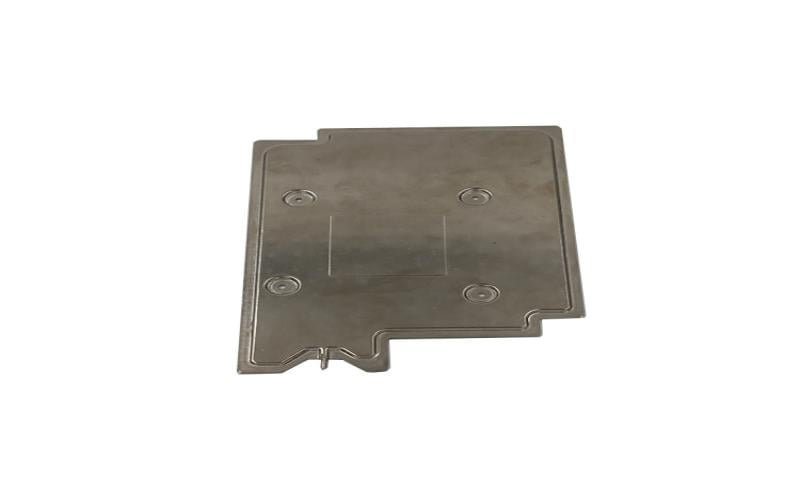What is Vapor Chamber Cooling?
Vapor Chamber Cooling is a highly efficient cooling technology that has gained popularity in recent years. It is commonly used in electronic devices such as smartphones, laptops, and gaming consoles to prevent overheating and ensure optimal performance. This article will explore the various aspects of Vapor Chamber Cooling and how it benefits different industries.
1. Enhanced Heat Dissipation
One of the key advantages of Vapor Chamber Cooling is its ability to enhance heat dissipation. Traditional cooling methods, such as heat pipes or fans, may struggle to effectively dissipate heat from high-performance electronic components. Vapor Chamber Cooling, on the other hand, utilizes a sealed chamber filled with a small amount of liquid coolant, typically water or a combination of water and other substances. The coolant vaporizes upon contact with the heat source, spreading the heat evenly across the chamber's surface and allowing it to dissipate more efficiently. This results in lower temperatures and improved overall performance.
2. Compact Design of Vapor Chamber Cooling
Vapor Chamber Cooling offers a significant advantage in terms of design flexibility. The flat and compact nature of vapor chambers allows them to be easily integrated into small electronic devices without adding excessive weight or bulk. This is particularly beneficial for smartphones, wearables, and other portable devices, where space is limited. By utilizing Vapor Chamber Cooling, manufacturers can optimize the internal layout of their products and enhance their overall design aesthetics.
3. Uniform Temperature Distribution
Another noteworthy benefit of Vapor Chamber Cooling is its ability to achieve uniform temperature distribution across the entire cooling surface. This uniformity is crucial for electronic devices with multiple heat sources, such as CPUs and GPUs, as it prevents hotspots from forming and ensures that all components are operating within their recommended temperature range. By maintaining consistent temperatures, Vapor Chamber Cooling helps reduce the risk of thermal throttling, which can lead to performance degradation and potential hardware damage.
4. Noise Reduction of Vapor Chamber Cooling
Traditional cooling methods often rely on fans, which can generate significant noise when operating at high speeds. Vapor Chamber Cooling, on the other hand, operates silently as it does not require any moving parts. By eliminating the need for fans, this technology reduces the overall noise level of electronic devices, providing a more pleasant user experience. This is particularly beneficial for laptops and gaming consoles, where quiet operation is highly desirable.
5. Increased Reliability
Vapor Chamber Cooling offers increased reliability compared to traditional cooling methods. The absence of moving parts such as fans or pumps reduces the risk of mechanical failure. Additionally, the sealed nature of vapor chambers prevents moisture or dust from entering, further enhancing the longevity of the cooling system. By improving the reliability of electronic devices, Vapor Chamber Cooling helps to minimize the need for costly repairs and replacements.
6. Energy Efficiency
Energy efficiency is a crucial aspect of modern electronic devices. Vapor Chamber Cooling contributes to energy efficiency by effectively dissipating heat, reducing the need for excessive cooling measures. This results in lower power consumption and longer battery life, particularly important for portable devices. By optimizing energy usage, Vapor Chamber Cooling aligns with the growing demand for environmentally friendly technologies.
7. Industrial Applications
Vapor Chamber Cooling is not limited to consumer electronics. It has found applications in various industries, including aerospace, automotive, and medical. In aerospace, vapor chambers are utilized to cool critical electronic components in satellites and aircraft. In the automotive industry, vapor chambers are integrated into electric vehicle batteries to manage heat generated during charging and operation. In the medical field, vapor chambers are used in diagnostic equipment and medical imaging devices to ensure accurate and reliable performance.
8. Overclocking Capabilities
Vapor Chamber Cooling offers excellent overclocking capabilities, making it a popular choice among PC enthusiasts and gamers. Overclocking refers to the process of increasing the clock speed of computer components, such as CPUs or GPUs, to achieve higher performance levels. However, overclocking often results in increased heat generation. Vapor Chamber Cooling effectively dissipates the additional heat, allowing enthusiasts to push their hardware to its limits without compromising stability or longevity.
9. Future Potential
Vapor Chamber Cooling is a relatively new technology that continues to evolve and improve. Ongoing research and development efforts aim to enhance its efficiency, reduce costs, and expand its potential applications. As electronic devices become more powerful and compact, the demand for advanced cooling solutions will only increase. Vapor Chamber Cooling is well-positioned to meet these demands and drive innovation in the field of thermal management.
10. Conclusion
Vapor Chamber Cooling is a highly efficient and versatile cooling technology that offers numerous benefits across various industries. From enhanced heat dissipation and compact design to noise reduction and increased reliability, this technology has proven its value in optimizing the performance and lifespan of electronic devices. As it continues to evolve, Vapor Chamber Cooling holds great potential for future applications and advancements in the field of thermal management.

